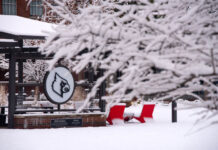Ron Atlas, who helped officials clean up the Exxon Valdez oil spill in Alaska in 1989, has developed a type of fertilizer that speeds up the biological breakdown of oil. Although time is the best cure for a spill, he says, his technique accelerates the healing process.
“You always want to do physical cleanup first to remove the oil quickly,” he said. “But after that, you can encourage the growth of bacteria that helps remove the oil. It’s a slower process that can take weeks, months or even years, but it works.”
Atlas says there are two types of fertilizer, slow-release pellets and an “oil loving” liquid, that promote the growth of oil-eating bacteria. The pellets can be scattered along coastal areas much as a home gardener would sprinkle fertilizer on a lawn, while the liquid can be sprayed along the shoreline.
“You need to use just the right amount, because if you don’t, you end up growing too much algae, and that kills fish.”
The technique, called bioremediation, was used successfully in the Valdez spill, Atlas said.
“There are already naturally-occurring bacteria in the environment that break down oil, but this method speeds things up,” he said. “It can get of oil in two to five years rather than 10.”
Atlas has not yet worked with BP on the Gulf of Mexico spill, but he has begun talking with a consultant the company has hired to manage the cleanup. He says it may be years before scientists fully understand the long-term effects of the spill on the area’s fish and wildlife.
A hurricane developing in the Gulf of Mexico in the next few months could be a good thing or a bad thing, he said. The storm could blow the spilled oil out to sea, but it could also blow more oil inland.
Atlas added that BP’s use of a chemical to disperse the oil is highly controversial.
“Dispersants work, but they are also toxic,” he said. “We just don’t know enough yet about how they affect life along the coastal areas.”
Atlas, who earned his M.S. and Ph.D degrees in microbiology from Rutgers the State University, is a past president of the American Society of Microbiology. His book, “Many Faces, Many Microbes,” was published in 2000, and he has written hundreds of articles for scientific journals.

























